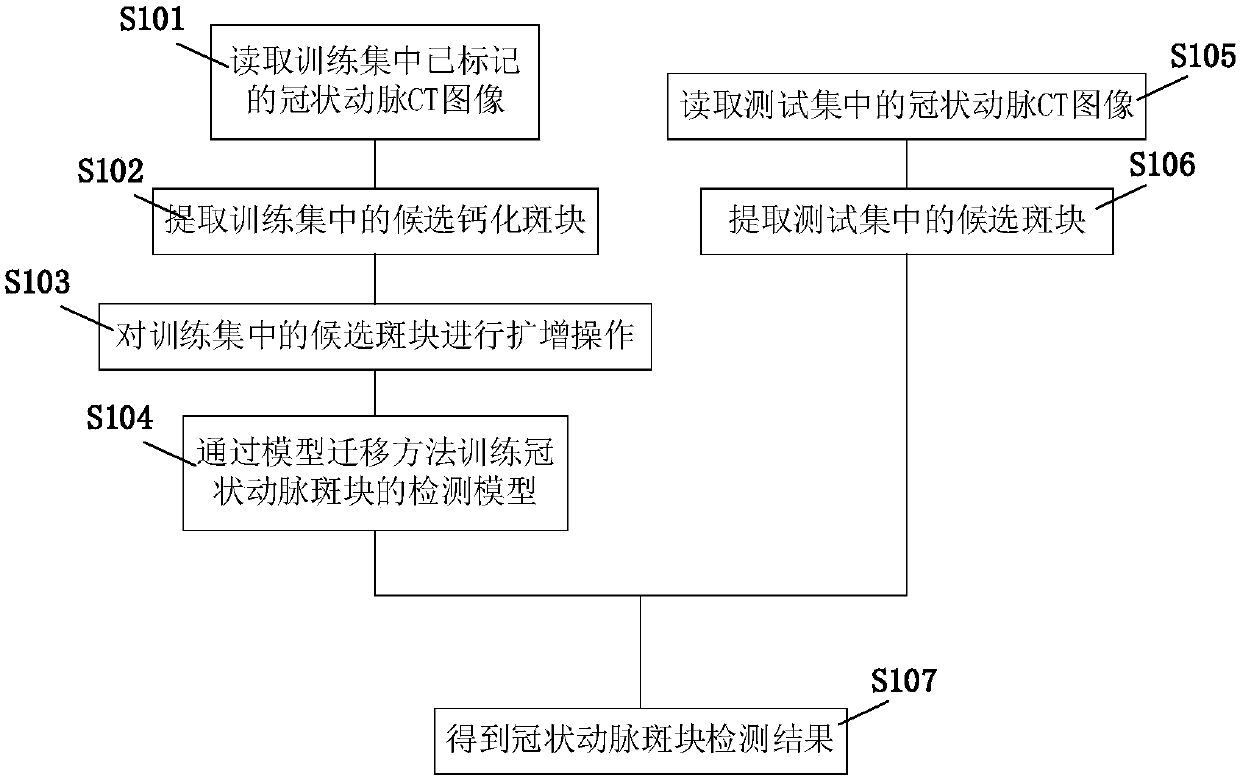Coronary artery calcified plaque detection method based on model migration
A technology for calcified plaques and coronary arteries, applied in image analysis, image enhancement, instruments, etc., can solve the problem that the data set size is not enough to train a deep network
- Summary
- Abstract
- Description
- Claims
- Application Information
AI Technical Summary
Problems solved by technology
Method used
Image
Examples
Embodiment Construction
[0016] The general idea of the present invention is to obtain the candidate calcified plaque in the image by directly analyzing the patient's coronary artery CT image automatically, and then use the deep learning model trained by natural images to obtain the candidate calcified plaque in the image through the model migration method in deep learning. Training a convolutional neural network model of coronary calcified plaques to accurately predict calcified plaques in coronary medical images.
[0017] A method for detecting coronary artery calcified plaque based on model migration provided by an embodiment of the present invention will be described in detail below with reference to the accompanying drawings.
[0018] figure 1 A flow chart of a method for detecting calcified coronary plaques based on model migration provided by an embodiment of the present invention.
[0019] Step S101, read coronary artery CT images in the training set.
[0020] Calcified plaque labeling of ...
PUM
 Login to View More
Login to View More Abstract
Description
Claims
Application Information
 Login to View More
Login to View More - R&D
- Intellectual Property
- Life Sciences
- Materials
- Tech Scout
- Unparalleled Data Quality
- Higher Quality Content
- 60% Fewer Hallucinations
Browse by: Latest US Patents, China's latest patents, Technical Efficacy Thesaurus, Application Domain, Technology Topic, Popular Technical Reports.
© 2025 PatSnap. All rights reserved.Legal|Privacy policy|Modern Slavery Act Transparency Statement|Sitemap|About US| Contact US: help@patsnap.com



